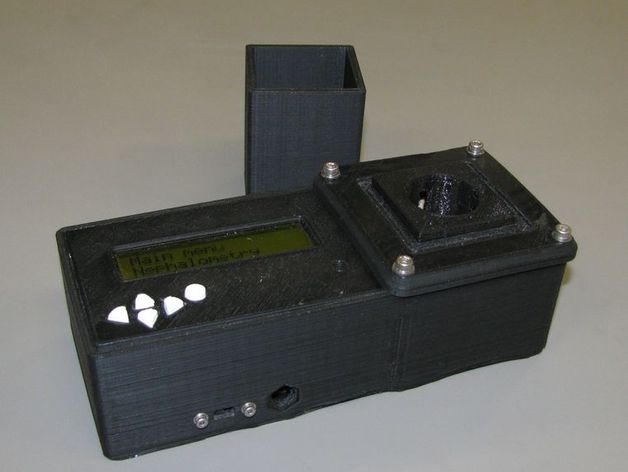Contaminated water is a huge problem in many third-world countries. Impure water leads to many serious health problems, especially in children. Installing a water purification system seems like a simple solution to this problem, but choosing the right purification system depends on the level of contaminants in the water.
Water turbidity testers are often used to measure the severity of water contamination. Unfortunately most commercial water turbidity testers are very expensive, so [Wijnen, Anzalone, and Pearce] set out to develop a much more affordable open-source tester. Their tester performs just as well as commercial units, but costs 7-15 times less.
The open-source water tester was designed in OpenSCAD and 3d printed. It houses an Arduino with a custom shield that measures the frequency from several TSL235R light-to-frequency converters. An LED illuminates the water and the sensors measure how much light is diffused and reflected off of particles in the water. Another sensor measures the brightness of the LED as a baseline reference. The turbidity of the water is calculated from the brightness values, and is displayed on a character LCD. More details about the tester are included in a fairly extensive paper.
[Thanks Andrew]
















“Contaminated water is a huge problem in many third-world countries.”
So let’s make sure we provide them with a device that is sooooooooo very much over designed that none of those third-world countries can afford to distribute them.
Lightbulb, lens, sample holder, battery, photoresistor, potentiometer, small box, cheap multimeter.
No programming, no 3D printed material, just simple, easy to assemble, easy to keep running, analog turbidity tester.
3 sealed test tubes with various levels of cloudiness for calibration, and a small chart listing what values mean what level of danger.
Turbidity is hardly rocket science, or even that accurate – it’s a rough guess at whether or not the water sample is contaminated with something, but adds not a hint of what that “something” is. Most people can tell the same thing by putting a water cup in the sample, and holding it up to the sun, if the sample is cloudy, it’s contaminated.
Yeah, even perfectly clear water can be contaminated with coli bacteria if someone upstream of you has a habit of shitting in the river.
@vonskippy
Please share your initiative to clean 3rd world water. I bet it’s just as amazing and it would be great to see more of your progress on it.
Pour it in a glass, and hold it up to the light ?
Actually, in the attached video clip they show a similar method. Place a bottle of water on top of a printed paper, and see if you can read the text through the water.
@opam – my Postdoc years are a couple of decades behind me, so I no longer have any ambition to save the world, which has proved time and time again it doesn’t want to be saved. My new motto (besides GET OFF MY LAWN) is let Darwin take it’s course.
On the other hand, if some multinational wants to hire me to design a REAL water quality tester, count me and my bank account in (hell, if there’s enough digits in the offer, I’ll do it as a advisory consulting gig).
@vonskippy
No ambition to save the world anymore :(
I hope your skills will be used if this issue gets closer to your area one day then. I know waters all over the developed world need analysis and constant improvement :)
uv spectroscopy would really rock in this application.
would measuring TDS (total dissolved solids) be an accurate representation of how contaminated water is?
Not particularly. What matters is what is in the water, not how much of it.
A microscope will reveal a great deal about the water. Cheap microscopes require no electricity.
How did we ever have project enclosures before 3D printers?